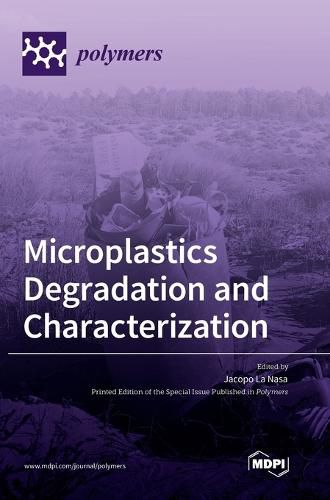Readings Newsletter
Become a Readings Member to make your shopping experience even easier.
Sign in or sign up for free!
You’re not far away from qualifying for FREE standard shipping within Australia
You’ve qualified for FREE standard shipping within Australia
The cart is loading…






This title is printed to order. This book may have been self-published. If so, we cannot guarantee the quality of the content. In the main most books will have gone through the editing process however some may not. We therefore suggest that you be aware of this before ordering this book. If in doubt check either the author or publisher’s details as we are unable to accept any returns unless they are faulty. Please contact us if you have any questions.
In the last decade, issues related to pollution from microplastics in all environmental compartments and the associated health and environmental risks have been the focus of intense social, media, and political attention worldwide. The assessment, quantification, and study of the degradation processes of plastic debris in the ecosystem and its interaction with biota have been and are still the focus of intense multidisciplinary research. Plastic particles in the range from 1 to 5 mm and those in the sub-micrometer range are commonly denoted as microplastics and nanoplastics, respectively. Microplastics (MPs) are being recognized as nearly ubiquitous pollutants in water bodies, but their actual concentration, distribution, and effects on natural waters, sediments, and biota are still largely unknown. Contamination by microplastics of agricultural soil and other environmental areas is also becoming a matter of concern. Sampling, separation, detection, characterization and evaluating the degradation pathways of micro- and nano-plastic pollutants dispersed in the environment is a challenging and critical goal to understand their distribution, fate, and the related hazards for ecosystems. Given the interest in this topic, this Special Issue, entitled "Microplastics Degradation and Characterization", is concerned with the latest developments in the study of microplastics.
$9.00 standard shipping within Australia
FREE standard shipping within Australia for orders over $100.00
Express & International shipping calculated at checkout
This title is printed to order. This book may have been self-published. If so, we cannot guarantee the quality of the content. In the main most books will have gone through the editing process however some may not. We therefore suggest that you be aware of this before ordering this book. If in doubt check either the author or publisher’s details as we are unable to accept any returns unless they are faulty. Please contact us if you have any questions.
In the last decade, issues related to pollution from microplastics in all environmental compartments and the associated health and environmental risks have been the focus of intense social, media, and political attention worldwide. The assessment, quantification, and study of the degradation processes of plastic debris in the ecosystem and its interaction with biota have been and are still the focus of intense multidisciplinary research. Plastic particles in the range from 1 to 5 mm and those in the sub-micrometer range are commonly denoted as microplastics and nanoplastics, respectively. Microplastics (MPs) are being recognized as nearly ubiquitous pollutants in water bodies, but their actual concentration, distribution, and effects on natural waters, sediments, and biota are still largely unknown. Contamination by microplastics of agricultural soil and other environmental areas is also becoming a matter of concern. Sampling, separation, detection, characterization and evaluating the degradation pathways of micro- and nano-plastic pollutants dispersed in the environment is a challenging and critical goal to understand their distribution, fate, and the related hazards for ecosystems. Given the interest in this topic, this Special Issue, entitled "Microplastics Degradation and Characterization", is concerned with the latest developments in the study of microplastics.